Streamhill
Houses within 10km of this house
Displaying 65 houses.
Houses within 10km of Streamhill
Displaying 65 houses.
| House name | Description | |
|---|---|---|
| Castle Oliver | The original Castle Oliver or Clonodfoy was the home of the Oliver family in the 18th and early 19th centuries. It was replaced by the present building in the mid 19th century. In 1814 Castle Oliver was occupied by George Fosbery who may have been employed by the Olivers. In 1837 Lewis described the castle as being in a very dilapidated state. It then belonged to R. O. Gascoigne of the county of York whose bailiff resided in it. The new building was designed by George Fowler Jones and built in the Scottish baronial style for the Oliver Gascoignes. At the time of Griffith's Valuation the castle was valued at £75 and the house at £48 and both were in the possession of Elizabeth O. Gascoigne and her brother-in-law, Frederick Charles Trench. The house was eventually inherited by Elizabeth's step-grandson, William Cosby Trench. He was the occupier in 1906 when it was valued at £125. Restored in the early 21st century it now provides self catering accommodation and is a venue for functions such as weddings. |
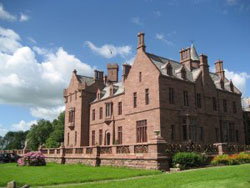
|
| Mount Russell | The home of James Russell in 1837 and at the time of Griffith's Valuation. The buildings were valued at £30 and James Russell held the property and 750 acres in fee. It is labelled as "in ruins" on the 25-inch Ordnance Survey map of the 1890s and nothing now remains. | |
| Castle Harrison | An early 18th century house, the seat of the Harrison family until the 1950s. According to Lewis it was built on the site of Castle Dod, an old Fitzgerald castle and was inhabited by Standish Harrison in 1837. A map dated 1736 in the National Library includes a drawing of the house then known as Castle Dodd. In the 1940s the Irish Tourist Association Survey noted that it was the residence of Mrs. Harrison, widow of General Harrison. It provides a description of the great hall which contained artefacts that had been unearthed on the estate during the construction of the nearby railway. Castle Harrison was inherited by five sisters in 1951 and the estate was sold to the Land Commission in 1956. The house was subsequently demolished. | |
| Burton Park | The original house built by Sir John Perceval and his descendants was burnt down in the Jacobite War 1689-1691. A late Georgian house was built to replace it by the [3rd or 4th] Earl of Egmont which was remodelled in the late 19th century. Burton Park was leased to the Purcells in the 19th century. It was occupied by the Reverend Matthew Purcell in 1814 and 1837 and by his son John in the early 1850s when the house was valued at £34. Passed to the Ryans of Scarteen, county Limerick by marriage in the early 20th century. In the 1940s the Irish Tourist Association Survey noted Burton Park as one of the best examples of eighteenth century domestic architecture in county Cork. Still the home of the Ryan Purcell family. |

|
| Clashganniv | Hajba writes that this house has always been the home of the O'Brien family. Vincent O'Brien, the famous Irish race horse trainer, was born at Clashganniv in 1917. The house is still extant and occupied. At the time of Griffith's Valuation there were two houses in Clashganniv, one valued at £16, was occupied by James Lynch and the other valued at £10 was held in fee by Sir Edward Tierney. | |
| Walshestown | This townland was leased to Robert Conron early in the 18th century by Sir Philip Perceval. By 1814 the house was occupied by John Wrixon. Hajba writes that he was the son of Edward and Anne Wrixon. In the early 1850s Nicholas Wrixon was resident holding the house valued at £8 from John Wrixon. In the 1830s the house is recorded as being occupied by George Crofts and his wife Eliza Purcell of nearby Burton Park. George Crofts was a brother of the Reverend F.W. Crofts. This house is no longer occupied. |

|
| Jordanstown | A house valued at £14 was occupied at Jordanstown by James Buckley at the time of Griffith's Valuation and held from Sir Edward Tierney. Hajba writes that the Buckleys continued to live at Jordanstown for the rest of the 19th century. Sold to Patrick Walshe in the early 20th century this house is no longer occupied. |

|
| Liskelly | This house situated on the Egmont estate was occupied by Richard Gregg in 1814 and in the early 1850s by David Coghlan who held the house valued at £12 from Sir Edward Tierney. Later Liskelly became the residence of the Nagles and the Brownes. It is no longer occupied. | |
| Bregoge House | A house reputed to incorporate the remains of an old castle. Bregoge Castle was occupied by J. Rogers in 1837 and by John Rogers in the early 1850s. The property was held from the Earl of Egmont and the buildings were valued at £7. The Irish Tourist Association survey in the 1940s notes it as the residence of "Mr.Ryan, a commercial traveller". The house is still a family home. |

|
| Glenville | At the time of Griffith's Valuation Mary Allen occupied Glenvillle, a house valued then at £8. The property was held from the Earl of Egmont. Catherine Cooke daughter of William Allen of Glenville married John Bevan of Camas in 1856. Hajba writes that Glenville belonged to Massy Bevan in the late 19th century. The house was restored in the 20th century and is occupied. |

|
| Rathclare | Clare Cottage was originally a residence on the Egmont estate which Hajba writes was leased to the Norcott family. Occupied by Martha Bullen in the early 1850s when the house was valued at £13. A much larger house was constructed in the mid 19th century incorporating the original building. By the end of the 19th century the home of the Burdon family who were still resident in 2002. In 2012 it was being offered for sale. |

|
| Ardenville | A single storey house possibly built for the heir to the Egmont title, Baron Arden, to reside in before succeeding to the title. At the time of Griffith's Valuation it was occupied by James Norcott and valued at £11.10 shillings. Recently extended and still occupied. | |
| Spitalfields | Dating from the mid 18th century, Hajba writes that this house was built by Christopher Waggett, nephew and son-in-law of George Crofts of Velvetstown House. By 1814 it was occupied by Richard Purcell and at the time of Griffith's Valuation by Fitzgerald O'Keeffe who held it from the Earl of Egmont. It was valued at £20+ at this time. In the 1870s George Crofts Harris of Spittalfields owned 591 acres in county Cork. The property of the O'Brien family in the 20th century, run as a guest house. |

|
| Buttevant Castle | Originally a castle of the Barry family, Earls of Barrymore, sold by them in the early 19th century to John Anderson of Fermoy, who restored it as a castellated house and gave it to his eldest son Sir James Anderson. Sir James lived there until the mid 1840s. William Roche occupied the building valued at £37 in the early 1850s. He held the property from Viscount Doneraile and D.R. Browning held a house, flour mill and offices valued at £120 from Roche. The castle had various occupants in the later 19th century and was last occupied in the early 20th century. It is now a ruin. |

|
| Castle View | Located on the Doneraile estate in the mid 19th century this house was occupied by Barry Gregg in 1837 and by the Reverend Cornelius Burkley in the early 1850s when it was valued at £28. This 18th century seven bay house is still a family residence. |
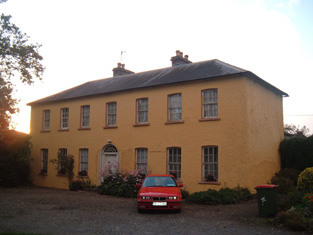
|
| Springfield | The seat of the Norcott family in the 18th and 19th centuries, occupied by Hugh Norcott in 1814 and by James Norcott at the time of Griffith's Valuation when the buildings were valued at £18. The property was held from the Viscount Doneraile at this time. Sold to the Davisons in 1908, it remained in their possession for much of the 20th century. The house is still occupied. |

|
| Park House | A house marked on Taylor and Skinner's map and noted by Wilson as Ballingrane and occupied by Hennessy esq. It became the home of Arthur Norcott, fourth son of Hugh Norcott of Springfield who was married to Frances Roberts of Britfieldstown, county Cork. Local sources suggest it was purchased from the Hennessys by Norcott. It was valued at £30 in the mid 19th century and held from the Reverend Francis Stawell. Sold in the 1890s to Ted Cogan whose descendants were still resident in the early 21st century. |
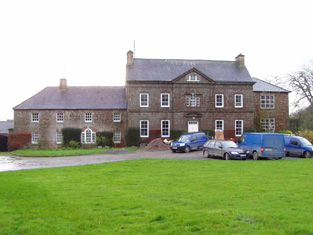
|
| Velvetstown | Seat of the Crofts family for over three centuries, "Velvex-town" was occupied by Thomas Crofts in 1814, by T. Lucas Crofts in 1837 and by Reverend William Crofts in the early 1850s. Reverend William held the house and 708 acres from Penrose Fitzgerald and the buildings were valued at £21. Hajba writes that the original house was replaced by an elaborate Italianate mansion in the late 1870s but when this burnt down in 1895 they moved back into their old home. She also writes that Velvetstown is one of the few North Cork houses still occupied by the family that built it. The Irish Tourist Association survey noted in the 1940s that the walls of the Italianate mansion were still standing though the chimneys had been taken down. |

|
| Castle Wrixon | A Wrixon property in the 18th century, occupied by John Wrixon in 1814 and Hajba writes that it was sold by the Wrixons to the Crofts in the mid 19th century. At the time of Griffith's Valuation it was occupied by John Connor who held it from Wills G. Crofts. The buildings were valued at £11. Christopher Crofts of Velvetstown House (died 1913) lived at Castle Wrixon for a time. He inherited Velvetstown from his uncle, Reverend Henry, in 1869. In the 1940s the Irish Tourist Association Survey outlined subsequent owners and noted that it was, by then, the residence of the McDermott family. It is still extant. |
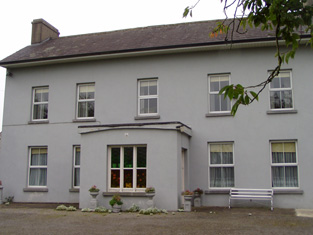
|
| Doneraile Court | A house of mainly early 18th century origin with 19th century additions located beside the village of Doneraile. Wilson, writing in 1786, describes it as "the magnificent and beautiful mansion, with extensive parks, gardens and demesnes". At the time of Griffith's Valuation the house was valued at £140. In 1942 the Irish Tourist Association Survey stated that the property had been bought by William St. Leger from Sir Walter Welmond and John Spenser, sonf of the poet Edmund Spenser. It was unoccupied in the 1940s and the agent was Mr. Hamilton. The house was sold to the Land Commission in 1969 by the wife of the 7th Viscount. The building was first restored by the Irish Georgian Society and since the early 1990s by various State bodies. It and the 400 acre demesne are now under the care of the Office of Public Works. |

|
| Glanmore | A Russell home in the 19th century, Hajba writes that it was bought by Michael Russell of Mount Russell from the Tynte family in 1815. Occupied by Michael Russell at the time of Griffith's Valuation it was held by him in fee. The buildings were valued at £24. The family were still resident in the mid 20th century and the house is still extant. It is labelled Ballynaboola House on the 1st edition Ordnance Survey map but as Glanmore on the 25-inch edition of the 1890s. |

|
| Springfort Hall | A branch of the Foott family were resident at Springfort from the early 18th century. The house was occupied by James Foot in 1814 and by [his grandson] another James Foote in the early 1850s, who held the property from the Earl of Limerick. Hajba writes that Springfort Hall was bought by Charles W. Wyatt in 1854 and sold again four years later to Captain Spencer Stewart, a grandson of the 7th Earl of Galloway. Springfort remained in the possession of the Stewart family until the beginning of the 20th century. It was leased to Commander Hans Thomas Fell White in 1895. It now functions as a country house hotel. |

|
| Elmvale | Elmvale was occupied in 1814 by Henry Lysaght and by 1837 was in the occupation of J. Duggan. Arthur Duggan held the property from the Earl of Limerick in the early 1850s. The house was valued at £20. Hajba writes that in the early 20th century the house was purchased by Sidney Royse Lysaght and following a feud with a neighbour was burnt in 1917. Later rebuilt and still occupied. |

|
| Pencil Hill | This house was built in the 1780s by Harmer Spratt who had married a member of the Foott family. It was known as Monte Video in 1837. The Spratt continued to live in the house untill the early 20th century when it was sold to the Perrott family. The Perrotts changed the name of the house to Beechfield and it was still the home of this family at the beginning of the 21st century. | |
| Clogheen | In his journal William Lysaght refers to building a cottage at Clogheen in 1749. He was leasing Clogheen from Lady Midleton [see De Breffny, page 115]. By 1814 Clogheen was occupied by Arundel Hill who was still resident in 1837. Reverend William F. Crofts was the occupier at the time of Griffith's Valuation. He held the property from William Lysaght. It was valued at £31. In 1870 the house was occupied by Mrs Ellen Crofts. This house no longer exists although the outbuildings still stand. | |
| Hazlewood | ''Burke's Irish Family Records'' suggests that this was originally an Atkins property which came into the possession of the Lysaghts through marriage. Hajba writes that William Lysaght built the house following his marriage in 1819 to Frances Atkins. Colonel Grove White's notes state that it was built before the marriage. In 1837 it was occupied by William Lysaght and in the early 1850s by Carbery B. Egan who held the property from William H. Lysaght. The buildings were valued at £21. This house remained in Lysaght posssession throughout the 20th century having been sold in 1913 by William Lysaght to his first cousin, Sidney Royse Lysaght. In the 1940s the Irish Tourist Association Survey noted that it was famous for its plant nurseries. |

|
| Kilburn/Kilbyrne | The White family resided at Kilburn from the early 18th century to the mid 20th century. The original building was replaced by a new house built in the late 1820s. This building was valued at £35 in the early 1850s. From 1903 to 1938 this house was the home of Colonel James Grove White who compiled the work ''Historical and Topographical Notes on Buttevant, Castletownroche, Doneraile and Mallow.'' The house was partly demolished in the mid 20th century. | |
| Hunting Hill | Hunting Hill, a single storey house, in the townland of Ballyhimock is marked on the first Ordnance Survey map. Home of the Dwyer family in the first half of the 19th century it was occupied by Mr William Dwyer in 1814 and by Thomas Dwyer at the time of Griffith's Valuation. Located on the Annesley estate it was valued at £15. Various tenants lived at Hunting Hill in the latter half of the 19th century until it was leased to Edward Vaughan, whose descendants continue to live here throughout the 20th century. A house is still extant at the site. | |
| Clogher | Originally a Nagle home and then in the possession of Harmer Bond through whom Clogher passed to the Lowes. Occupied by Mrs Eliza Lowe in the early 1850s, held from Garret Nagle and valued at £28. This house was derelict at the end of the 20th century. Through the Nagles Clogher had a connection with Edmund Burke, Lewis states that the estate "once belonged to the celebrated Edmund Burke". | |
| Ballynamona | The Nagles originally inhabited the castle at Ballynamona but later built a house adjoining the castle. Garret Nagle was resident in 1814 and Lewis refers to Ballynamona as the ancient family residence "about to be rebuilt". Garret Nagle occupied a house at Ballynamona valued at £9.15 shillings at the time of Griffith's Valuation which he held from John Furlong. The house is still occupied. | |
| Annakisha | The Nangles appear to have held Annakisha from the end of the 17th century and the house may possibly have dated from this time. Pierce Nagle was resident in 1814 and in 1837 and in the early 1850s held the property in fee. The buildings were valued at £22. Sold by Pierce Nagle to the Hamiltons of Castle Hamilton, county Cavan. Hajba writes that the house was derelict by the beginning of the 20th century and it does not appear on later maps. | |
| Johnsgrove | Originally a Glover family home, by the time of Griffith's Valuation it was occupied by Francis F.P. Holmes and held from Walter Nugent. The buildings were valued at £30. This house is still occupied. |

|
| Castlekevin | Originally a Roche stronghold which was granted to William Thornhill a Cromwellian soldier. It remained the seat of the Thornhill family until the mid 19th century. The old castle was incorporated into a castellated mansion in the 1830s. Lewis writes in 1837 that the ‘present extensive castellated mansion was rebuilt by Mr Thornhill after designs by Mr Flood, in the Elizabethan style’. Sold by the Thornhills in the mid 19th century to the Reeves family in whose possession it remained until the 1930s. Still extant and occupied. |

|
| Ballyvonare | A Barry property from the late 18th century passing through the female line to the Harold/Harold-Barry family. The house was valued at £34 at the time of Griffith's Valuation and was held in fee. In the 1940s the Irish Tourist Association Survey outlined details of the family's history in the area and the existence of a soup kitchen there during the Famine. The Harold-Barrys still live at Ballyvonare. |
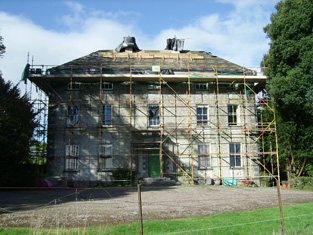
|
| The Hermitage | Hajba states that this single storey house was built by the Reverend John Bagwell Creagh before 1814. Located on the Creagh estate it was occupied by J. Norcott in 1837 and by Samuel Morton Tuckey in the early 1850s, when the buildings were valued at £15.10 shillings. Later inhabitants included William Stawell. Home of the Broderick family in the 20th century. |
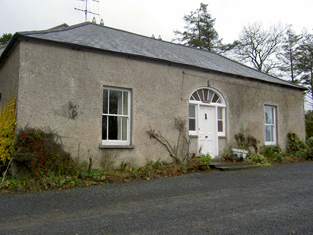
|
| Laurentinum | A mid 18th century house, seat of a junior branch of the Creagh family until the mid 19th century. Wilson refers to Laurentinum as the seat of Mr. Creagh in 1786. At the time of Griffith's Valuation occupied by Stephen Fagan who held it from the representatives of Michael Creagh. The buildings were valued at £32. Later sold to the MacCarthy Morroghs. Home of the Magner family in the 20th century. |
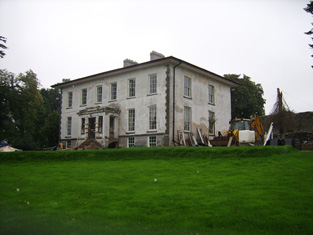
|
| Kilbrack | Hajba writes that this house was built by William Stawell who married Catherine Creagh of Creagh Castle. William was succeeded by his nephew the Reverend Francis Stawell in 1830. Kilbrack remained in Stawell possession until the end of the 19th century. It is still a family home. |

|
| Kilbrack Cottage | Occupied by Michael Creagh in 1814 and by Reverend E.P. Sheehan in 1837. Father Sheehan's representatives were the occupiers at the time of Griffith's Valuation. They held the property valued at £25 from the representatives of Michael Creagh. Kilbrack Cottage is still extant. The National Inventory of Architectural Heritage indicates that it was built c.1760. |

|
| Landscape | This house was held by the Foot family from the Hills by a lease dated 1789 for 3 lives renewable for ever. Occupied by James Hammond in 1837 and in the early 1850s Thomas Bailey was resident holding the property valued at £10.15 shillings from Miss Hill. In the sale rental of 1858 the tenants are given as Margaret and Lucinda Foot. |
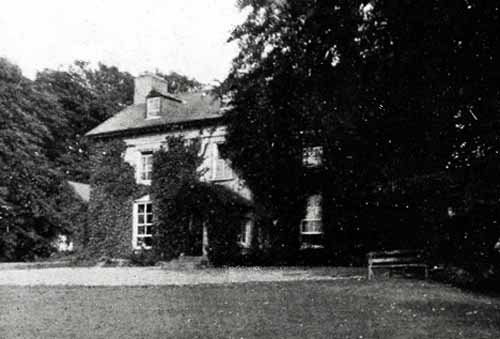
|
| Ballyellis | Ballyellis was occupied by Edmund Barry in 1814 and by Henry Langley at the time of Griffith's Valuation. H. Langley held the property from James Barry and the buildings were valued at £12. It later came into the possession of the Harold Barry family and members of the family were still resident at Ballyellis at the beginning of the 21st century. |
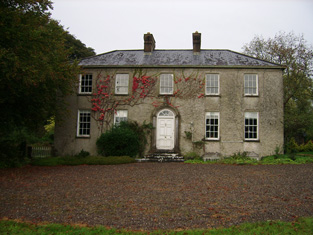
|
| Byblox | Burke's Landed Gentry of Ireland (1904) traces the Ross family of Dunmoyle from the Mann family of Byblox in the first half of the 18th century. Hajba writes that the original house was occupied by the Langley family in the 18th century. At the end of that century Roger Langley leased Byblox to Robert Fennel Crone who built a new house to replace the original which had been accidentally burnt. It was valued at £70 in the mid 19th century. The descendants of Robert F. Crone, including members of the Croker family, inhabited this six bay, three-storied house until the beginning of the 20th century when it was bought by the Morrogh Bernards. In the 1940s the Irish Tourist Association Survey noted that the house was then in the possession of Mrs. Drake Brockman but it was unoccupied with John Roche acting as agent. Byblox was demolished in the 1960s. |
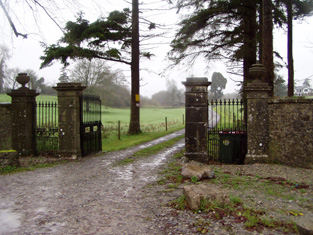
|
| Carker | An early 18th century house built by the Evans family and their main residence for two centuries. It was valued at £40 in the mid 19th century and occupied by John W. Evans in 1906. The roof was removed in the 1950s but the house has been recently restored. For sale in recent years, see www.michaelhdaniels.com. |

|
| Lissa | Originally a Nash home, which passed to Admiral Henry Evans, a younger brother of Nicholas Green Evans, following his marriage to Elizabeth Nash in 1801. Hajba writes that it was occupied by Hugh Norcott in the early 19th century. Captain Croker was resident in 1837 and Charles Croker in the early 1850s. He held the property from the Admiral's son, Nicholas Evans, and it was valued at £32. The home of the Kerr family in the 20th century. For details of the Croker occupation see see http://members.iinet.net.au/~nickred/croker_research/The_Irish_CROKER.pdf page 65. |

|
| Newtown Park | Built by John Evans, younger brother of Ralph Westropp Evans, in 1847. He is recorded as the occupant at the time of Griffith's Valuation, holding the property from his first cousin, Nicholas Evans. The buildings were valued at £15. The house was later extended by Nicholas Evans. Still extant and occupied. |
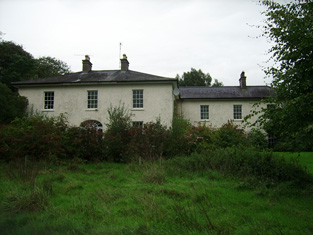
|
| Creagh Castle | Creagh Castle was acquired by Dr John Creagh in the late 18th century and passed to his daughter Mary and her husband, Kilner Brooke Brasier. Their second son, John Brasier-Creagh, inherited Creagh Castle and is credited with building the present house, the original one having been destroyed by a fire. George Washing Brasier Creagh held Castle Creagh in fee at the time of Griffith's Valuation. The buildings were valued at £50. The descendants of John's brother, George Washington Brasier Creagh, continued to live at Creagh Castle until the 1930s. In 1906 the building was valued at £44+ and occupied by Captain John Brazier Creagh. In the 1940s the Irish Tourist Association Survey noted that there was a castle formerly associated with the Coppinger family on this property. |

|
| Crobeg | Home of a branch of the Stawell family throughout the 19th century. The family were involved in the flour milling business at Doneraile. At the time of Griffith's Valuation George Stawell held Crobeg from the representatives of Luke Hassard. The buildings were valued at £36. The house was demolished in the 1980s. |

|
| Cromore | John Creagh leased part of Castlesaffron to Luke Hassard in the late 18th century, who Hajba writes built the house Cromore. Soon afterwards it became the home of the Campion family and Roland Campion was resident at the time of Griffith's Valuation, holding the property from the representives of Luke Hassard. The buildings were valued at £15. Later the home of the Graham family. The building was extensively rebuilt and restored in the 1980s. | |
| Old Court (Doneraile) | Originally a Watkins house, the property was leased to Jonas Stawell in 1813. The Stawells built a new house circa 1814. The Watkins sale rental of June 1853 includes a lithograph of the house and floor plans. In the early 1850s George C. Stawell held the house, valued at £40, from Edmund Nagle. Sold in the early 1850s to the Morroghs of Glanmire House. In the 1940s the Irish Tourist Association Survey noted that this property had also been associated with Alexander Roche, the brother of Lord Fermoy. At the time of the survey the house was occupied by a Miss Creagh and a Miss Shannon. It is now a ruin. |

|
| Saffron Hill Cottage | Hajba writes that this house was built in the first decade of the 18th century by Reverend Edward Sayers, rector of Templeroan. An Edmund Sayers is recorded as the occupant in the early 1850s. He held the property from Viscount Doneraile. The buildings were valued at £22. The Sayers estate at Croghnacree was advertised for sale in November 1859, November 1864 and May 1865. In 1906 Lord Castletown was recorded as the occupier. This house, an eleven bay single storey building, ceased to be a residence in the mid 20th century but has since been restored and is now inhabited again. Reference to the Sayers family in the Moore sale rental of 27 Feb 1863. This house is also associated with the Brasier Creagh family. |

|
| Cottage | James Norcott is recorded as the proprietor of Cottage, Doneraile, in 1814 and J. Norcott MD was resident in 1837. Philip Allen occupied the house in the early 1850s. He held it from Arthur Norcott and the buildings were valued at £20. This house no longers exists. | |
| Donnybrook | Donnybrook was occupied by Charles Smyth in 1814 and by W. Hill in 1837. It belonged to the representatives of Arundel Hill in the early 1850s when the buildings were valueda at £28 and the property was held from William Hill. Bought by the O'Connors at the end of the 19th century. |

|
| Ballyshara | Occupied by Henry Evans in 1814 and by Ralph Evans at the time of Griffith's Valuation. He held the property from Reverend Francis Stawell. The buildings were valued at £18. The home of the Duane family in the 20th century, now a ruin. | |
| Graig | Built by the Hill family, probaby in the last decade of the 18th century, this house was their main home throughout the 19th century. Occupied by James Hill in 1814 and 1837 and by Arundel Hill in the early 1850s. The buildings were valued at £25. By the mid 1870s the head of the Hill family was resident at Mount Southwell. Graig was restored in the 20th century. |
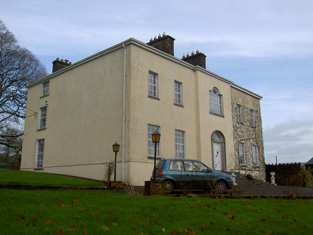
|
| Bowen's Court | Built in the 1770s by Henry Cole Bowen this house was the seat of the Bowen family until 1959 when it was sold by the author Elizabeth Bowen. Wilson, writing in 1786, refers to it as Faraghy, the seat of Mr. Cole Bowen. It was held in fee by Mrs. Eliza Bowen at the time of Griffith's Valuation, when it was valued at £75. In 1942 the Irish Tourist Association Survey noted that the house had been attacked during the 1798 rebellion. Bowen's Court was demolished in 1961. |
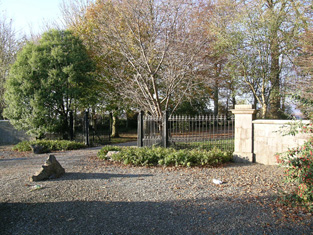
|
| Woodville | Built as a shooting lodge for the Holmes family, occupied by Richard Sherlock in 1814 and by Captain William Harrington Sherlock at the time of Griffith's Valuation and bought by him in the Encumbered Estates' Court. His daughter married George Washington Brasier Creagh and the house remained in her possession until the 1920s. It is now a Crofts residence. | |
| Ballyhoura Lodge | Ballyhoura Lodge was occupied by Christopher Crofts at the time of Griffith's Valuation. He held the property from the representatives of Robert Holmes and the buildings were valued at £23. The house is still a family home. |
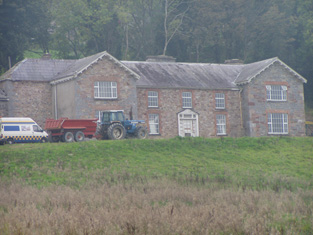
|
| Springvale | This house was ccupied by Roger Bourke in 1814 and by Roger S. Bourke in 1837. Roger Burke was married to a sister of Garret Nagle of Ballinamona. William Baily was resident in the early 1850s and held the property from the Earl of Kingston. The buildings were valued at £14.10 shillings. Grove White writes that Springvale was purchased by George Grehan of Clonmeen in 1855 and John J. Therry, his agent, lived there. In 1942 the Irish Tourist Association noted it as the residence of Mrs. Helen Clancy, a descendent of Therry. Although abandoned for some years in the 20th century the house has now been restored and is lived in again. |

|
| Rough Hill | The home of the Harmon family from the late 18th to the late 19th century. At the time of Griffith's Valuation Samuel Harman occupied the house valued at £12 and held from Sampson French. Buildings are still extant at the site. | |
| Oldtown House (Fermoy) | William Creagh of Oldtown married Sarah Nagle of Annakissy in the 1770s. The Creaghs were succeeded at Oldtown by the Evans family. Rear Admiral Henry Evans was the occupier in 1837. Oldtown was the residence of Nicholas Evans in the early 1850s. Valued at £29 it was held from Pierce Nagle. Later occupied by the Campion and Roberts families. Oldtown is still extant. |
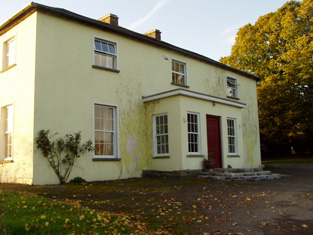
|
| Shanballymore | The seat of a branch of the Roberts family, Hodder Roberts was resident in 1814 and Watkins Roberts in 1837. The residence of John Roberts in the early 1850s, held from William W.M. Hodder and valued at £23. The property remained in Roberts possession until 1884 when it was sold to the O'Keeffe family who still reside there. |

|
| Dannanstown | A house built beside a large mill by John Furlong circa mid 19th century. At the time of Griffith's Valuation occupied by John Furlong who held it and the large flour mill and offices from Richard Welstead. The buildings were valued at £135. Later owned by Humphrey Smith and Robert Hobson. |
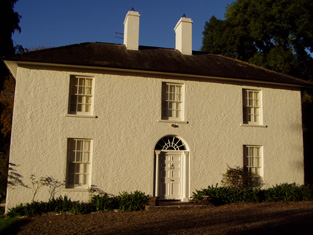
|
| Newtown | The seat of the Knight family in the 18th century now demolished. Wilson refers to Newtown as the seat of Mr. Knight in 1786. This house was occupied by Michael Connor in the early 1850s, valued at £8 and held from Mrs Eliza Sealy. A later house now stands on the site. | |
| Cahermee | A late 17th century house belonging to the Freeman family, passed by marriage to the Hewson family. A Hewson relative John Milward was resident in 1814. Occupied by John Kearney and held from John Hewson at the time of Griffith's Valuation, when the buildings were valued at £8.5 shillings. Hajba writes that Margaret, daughter of William Hewson Kearney, inherited the house and she married Michael Carroll. This house is no longer occupied. |

|
| Wallstown Castle | The castle was originally in the hands of the Wall family. In the late 17th century it passed into the possession of the Ruddocks and then through marriage to the Creaghs and Stawells. In 1836 it was leased to Thomas Baily and was held by Charles Bailey from Thomas Bailey at the time of Griffith's Valuation, valued at £7.18 shillings. The property was purchased by John McCormick of Dublin in 1858. The battlements were added to the building circa 1860. See www.corkpastandpresent.ie. In the 1940s the Irish Tourist Association reported that it had been purchased in the 1920s by a Mr Crowley who "lives in a grand mansion near the ruin of the old castle", |
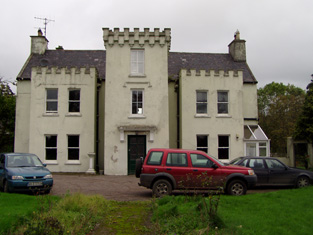
|
| Holmesfort | In the 1940s the Irish Tourist Association survey notes that a house at Shinanagh, parish of Imphrick, was occupied by Major Thomas Holmes in the early nineteenth century and known as Holmesfort. It was replaced in the 1830s by another house, built by an O'Connor family. By the 1940s it had become the home of the O'Regan family. A house and farm buildings are still extant at the site. |

